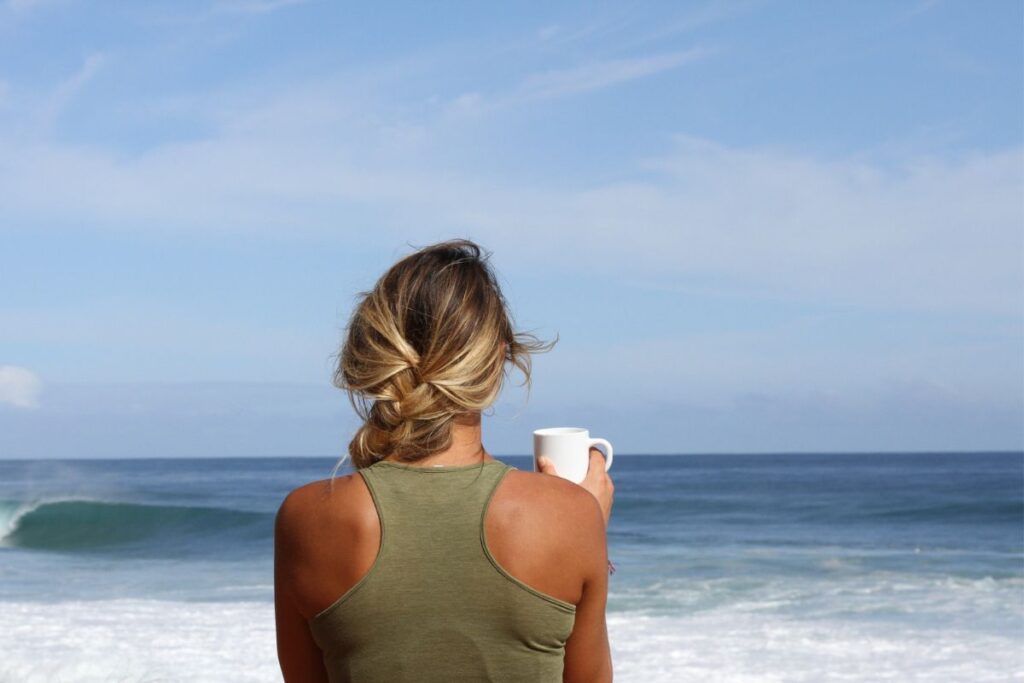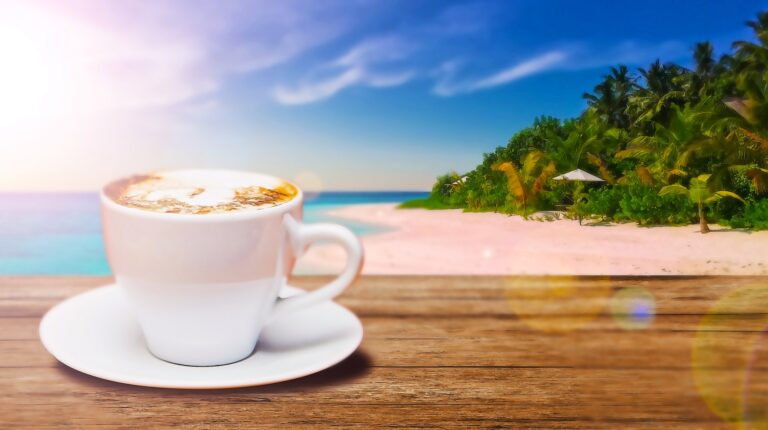Aloha, coffee lovers! In this article, I’ll share interesting facts about coffee production in Hawaii.
Coffee has been grown in Hawaii for over 150 years, and it’s become a major part of the state’s economy. In fact, Hawaii is the United States’ top producer of coffee.
There are many different types of coffee grown in Hawaii, and each has its own unique flavor profile.
By Mila.
Affiliate disclosure
This page may contain affiliate links – we may earn a small commission when you make a purchase through these links. This is at no extra cost to you.
Hawaiian Coffee Production
Coffee is now grown on more Hawaiian farms than any other crop.
The USDA estimated that 6,900 acres of land were used for coffee cultivation in the state as of January 2021.
Even though this amounts to less than 1% of all coffee grown globally, the country’s coffee industry is still valued at about $250 million USD, divided between production and consumption.
Hawaii Coffee Regions
There are a quite a few coffee regions in Hawaii, and each one has its own unique flavor profile.
Here’s a list of the main Hawaiian regions producing coffee:
- Kauai
- Maui
- Molokai
- Kona district
- The Big Island
Kona coffee is the most popular, and it’s grown on the Big Island.
Kauai Coffee Production
The largest coffee plantation in the US is located on the Hawaiian island of Kauai.
The coffee is sustainably grown, harvested, roasted, and packaged on the estate by Kauai Coffee, which is situated on the south shore.
Their visitor center has a gift shop and a coffee shop.
Maui Coffee Production
About 600 acres of coffee are grown on the island of Maui, which also grows a wider variety of crops.
This is because the Hawaii region where coffee is grown has a mountainous landscape and a variety of microclimates.

Maui Grows Various Kinds of Coffee
Farmers in this region are more adventurous when it comes to bean varieties and processing methods, which supports the expansion of the regional coffee market.
Maui cultivates a wide range of varietals, including Typica, Catuai, Caturra, Bourbon, and Mokka, in a variety of microclimates on the slopes of Haleakala and the West Maui Mountains.
Molokai Coffee Production
Moloka’i is located between Oahu and Maui. In the village of Kualapu’u on this small island of 7,500 people, there is a 150-acre (57-hectare) plantation and a mill. It is the only place where you can get 100% Molokai coffee.
Molokai grows Red Catuai (created in Brazil in 1949), which was chosen for its superior quality and compatibility with local growing conditions in the mid-1980s.
These Arabica coffee trees are planted on the central island’s upper slopes in the vibrant red soil.
What is Kona Coffee?
Kona Coffee (a market name for Coffea Arabica) is a world-renowned coffee that is exclusively grown on the slopes of two volcanoes on the Big Island.
Kona coffee is a specialty coffee that stands out from the crowd due to its prime farming location and production methods.
Kona District Coffee Production
Due to its nutrient-rich, volcanic soils, the Kona Coffee Belt, which is situated on the slopes of the Mauna Loa and Hualalai volcanoes, is an ideal region for growing coffee.
Coffees are graded based on size and quality after processing and drying. Kona Fancy, Kona Extra Fancy, and Kona Peaberry are notable Kona grades.
Kona Coffee is a Family Business
In their official website, the producers of the Kona Coffee share that their 100% Kona coffee is grown on the slopes of Hualalai, then milled, roasted, brewed, and served all within a 10-mile radius from their farm.
“Our family-owned and operated company also seeks out the best Hawaiian teas to serve in our Kailua-Kona café or send to you via our online shop.”
Hawaiian Coffee Grows in Volcanic Soil
We lava Hawaiian coffee!
Hawaiian coffee grows in rich, volcanic soil, and because crops are planted relatively near active volcanoes, when they erupt, it can affect the coffee (indirectly).
The producers of the Kona Coffee shared that the fire and lava doesn’t directly affect the coffee, since “all of the lava is contained inside the caldera like the water inside of a pool”.
Hawaiian Coffee Benefits from Volcano Eruptions
Hawaiian coffee can be positively or negatively affected by volcanoes.
How?
The Volcano indirectly affects the growth of coffee shrubs and the entire agriculture of the Island of Hawaii via gaseous emissions and their effect on the weather.
According to farmers, when a volcano, such as Kilauea, erupts, it makes the weather drier, and therefore more tropical and ideal for coffee growth.
Too much rain is considered a problem, since it “confuses” trees making them produce smaller blooms of cherries at many different times, which makes harvesting more difficult and costly.
Best Hawaiian Coffee
Kona Coffee is considered the best Hawaiian coffee by many, and not just in the U.S.
As you know by now, Kona coffee is well-known for a variety of reasons, including its mineral-rich volcanic soil.
Sarah, a Hawaiian travel writer, shares a list of the best Hawaiian coffee companies for you to learn more and enjoy real Hawaiian coffee:
- Big Island Coffee Roasters
- Koa Coffee
- Hawaii Coffee Company.
Photos by Pexels and Michael Brasuela





